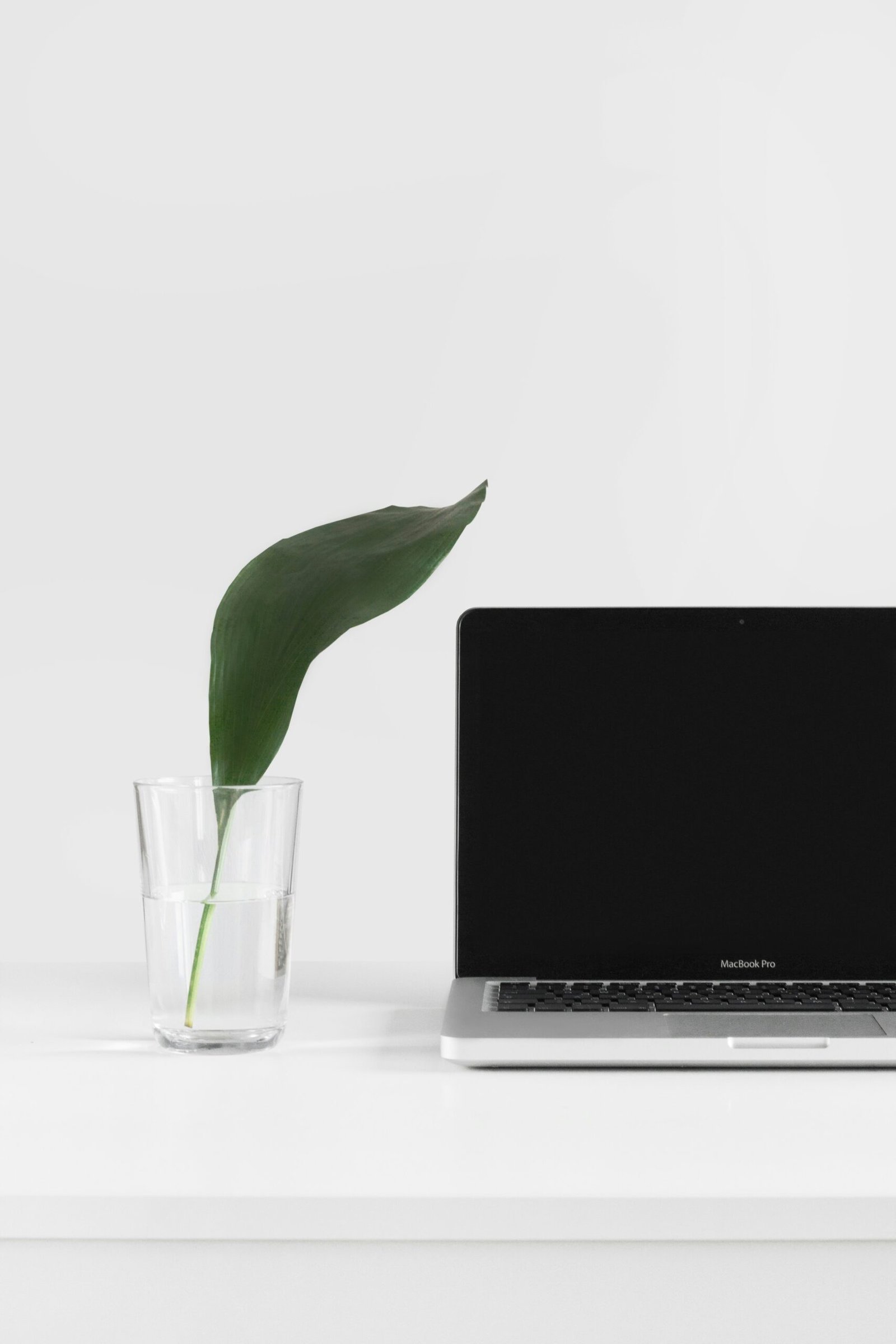10 Creative Work from Home Ideas to Boost Productivity in 2024
Introduction
In recent years, the concept of working from home has undergone significant transformation. Originally adopted out of necessity during global events, such as the COVID-19 pandemic, it has since evolved into a more established working model. While many individuals appreciate the flexibility and convenience that remote work offers, it also presents numerous challenges, particularly in maintaining productivity. Distractions at home, lack of structured environments, and difficulty in separating work from personal life are common hurdles faced by remote workers.
As we enter 2024, it is essential to explore creative strategies that can help enhance efficiency while working from home. The importance of creativity in the workplace cannot be overstated; it serves as a catalyst for innovation and can lead to improved problem-solving skills. The ability to think outside the box when designing one’s workspace or establishing a daily routine can significantly impact an individual’s capacity to remain productive. It is increasingly important for remote workers to discover new methods and inventive approaches to their daily tasks and environments.
This article aims to highlight upcoming trends and innovative ideas that can assist individuals in boosting their productivity while navigating the challenges of working from home. By incorporating unique work-from-home ideas, professionals can revitalize their routines, stimulate their creativity, and ultimately foster a more satisfying and productive remote working experience. As we delve into the top 10 creative work from home ideas, readers will gain valuable insights that can be seamlessly integrated into their daily practices, paving the way for an efficient, engaging, and successful work-from-home experience in 2024.
You can also check 25 Top Tips for Work Productivity from Home in 2024

Create a Dedicated Workspace
Establishing a dedicated workspace at home plays a crucial role in maintaining a professional mindset and enhancing productivity. It allows individuals to create a physical boundary between their work and personal life, fostering an environment conducive to focus and creativity. The significance of having a designated work area cannot be overstated, as it cultivates a mental separation that minimizes distractions and promotes efficiency.
When designing your workspace, consider decluttering first. A clean, organized area not only improves visual appeal but also enhances cognitive function. Dedicate a few hours to sort through papers, eliminate unnecessary items, and streamline your supplies. Invest in storage solutions like filing cabinets and drawer organizers to create an orderly environment. This approach is not merely about aesthetics; studies have shown that clutter can lead to heightened stress levels, hindering productivity.
Next, think about the organization of your workspace. Positioning your desk in a well-lit location, preferably near a window, can have a profound impact on your mood and energy. Ensure that your essential tools are within arm’s reach, which allows for an efficient workflow. Additionally, utilizing a whiteboard or planner to outline daily tasks can enhance focus and accountability as you systematically check off objectives throughout the day.
Decorating your workspace in a manner that inspires creativity is equally important. Consider incorporating elements such as plants, artwork, or motivational quotes that resonate personally. These subtle additions can evoke positivity and stimulate creative thinking, ultimately benefiting your overall productivity. Setting up an effective workspace results in not just improved performance but also psychological benefits, fostering a sense of stability and purpose in the work-from-home setting.
Implement Flexible Working Hours
Flexibility in working hours has emerged as a critical factor in enhancing productivity among remote employees. Allowing individuals to tailor their work schedules according to their peak productive times enables them to focus better and achieve higher levels of output. Studies have shown that professionals experience fluctuations in their energy and concentration levels throughout the day. By implementing flexible working hours, organizations can empower employees to work at times when they feel most alert and creative.
According to a report published by Gallup, employees who have the autonomy to set their own work hours are significantly more engaged, with a 73% increase in productivity. The freedom to align work with personal energy rhythms not only boosts efficiency but also contributes to overall job satisfaction. Productivity is intricately tied to motivation, and when individuals can select hours that suit their lifestyles, they are more likely to remain motivated and dedicated to their tasks.
Furthermore, experts from the Harvard Business Review have noted that flexibility can also cater to employees’ personal responsibilities, enhancing work-life balance. This balance is essential in today’s fast-paced life, where many individuals juggle family commitments alongside their professional responsibilities. Flexibility allows them to manage both spheres more effectively, reducing stress and increasing their overall output at work.
Incorporating flexible working hours is not merely a trend but a strategic move that many organizations are adopting to foster a more productive workforce. Embracing this approach can lead to significant improvements in performance metrics, essentially benefiting both employees and the organization as a whole. As businesses continue to evolve in the digital age, the integration of flexible work schedules will remain a pivotal aspect in driving productivity and ensuring employee satisfaction.
Incorporate Breaks and Movement
In the ever-evolving landscape of remote work, it is essential to prioritize regular breaks and physical activity to maintain productivity and enhance overall well-being. The human brain and body thrive on movement, and integrating break times into the work schedule can significantly rejuvenate both mental and physical vitality. One popular methodology for doing this is the Pomodoro Technique. This time management method entails working for 25 minutes followed by a 5-minute break, encouraging individuals to focus intensely while also providing a structured opportunity to disconnect and refresh. This cycle not only allows employees to sustain their concentration but also helps to prevent burnout by reducing prolonged sedentary periods.
Moreover, incorporating movement into these breaks can have a transformative effect on energy levels and productivity. Simple activities, such as stretching, taking a brief walk, or even practicing yoga, can foster not only physical health but also mental clarity. Studies suggest that even short bouts of physical activity can trigger the release of endorphins and improve mood, making it easier to tackle complex tasks. Research conducted by the American Psychological Association has shown that workers who take regular breaks experience increased job satisfaction and greater output. Testimonials from employees implementing these practices often highlight the revitalizing effects of a brief pause for movement within their work routines.
Furthermore, during these breaks, practicing mindfulness techniques or deep-breathing exercises can further enhance focus when returning to tasks. By incorporating structured breaks and movement throughout the workday, remote workers can improve their productivity, boost creativity, and ultimately cultivate a healthier work-from-home environment. The positive correlation between regular breaks, physical activities, and increased productivity cannot be overstated, suggesting that through thoughtful planning, remote working can be optimized for better performance.
Leverage Technology Tools
In 2024, leveraging technology tools has become an indispensable strategy for enhancing productivity while working from home. The contemporary workspace, increasingly reliant on digital solutions, offers a variety of collaboration platforms, project management apps, and automation tools designed to streamline workflows and foster effective team dynamics.
Collaboration platforms such as Microsoft Teams, Slack, and Zoom facilitate seamless communication among remote team members. These tools provide a central location for discussions, file sharing, and video conferencing, ensuring that teams remain connected irrespective of geographical barriers. For instance, companies utilizing Slack report higher engagement levels and quicker decision-making processes, resulting from efficient and organized conversations.
Project management applications like Trello, Asana, and Monday.com enable teams to track their tasks and deadlines more effectively. By offering visually engaging boards and lists, these platforms help users prioritize their work, assign responsibilities, and monitor progress in real-time. In particular, Asana’s functionality allows teams to create project timelines that align everyone’s efforts toward shared objectives, which has been shown to enhance accountability and collaboration.
Moreover, automation tools such as Zapier and Automate.io significantly reduce manual tasks, freeing up time for more critical responsibilities. By integrating various applications and automating repetitive processes, these tools optimize workflow efficiency. For example, a marketing team could use Zapier to automatically update their leads database every time a new contact is added, ensuring that no opportunities are missed while minimizing administrative overhead.
In summary, the incorporation of such technology tools in 2024 not only transforms how remote teams collaborate but also enhances overall productivity. Through effective communication, organized project management, and streamlined automation, these tools have become crucial assets in the ever-evolving work-from-home landscape.
Adopt Mindfulness Practices
In the pursuit of enhancing productivity while working from home, adopting mindfulness practices has emerged as a significant strategy. Mindfulness encompasses a range of techniques aimed at fostering awareness and presence in the moment. These practices, such as meditation and deep breathing exercises, not only alleviate stress but also cultivate concentration and clarity, which are essential for maximizing output in a remote work environment.
One of the most accessible forms of mindfulness is meditation. A brief daily meditation session, even if it lasts only five to ten minutes, can provide substantial benefits. Studies indicate that individuals who engage in regular meditation experience improved focus, enhanced creativity, and a greater ability to manage stress. For example, a remote worker who integrates a morning meditation routine reported feeling more energized and focused throughout the day, ultimately increasing their productivity levels. This anecdote highlights the importance of setting aside time for personal well-being to facilitate a more fruitful workday.
Another effective technique is deep breathing exercises, which can be done at any point during the workday to center the mind and reduce tension. When feeling overwhelmed, individuals can take a few moments to practice deep inhalations and exhalations, consciously directing their breath. Research has shown that this practice lowers cortisol levels, allowing for a calmer approach to tasks. A software developer shared that incorporating breathing exercises into her breaks transformed her work sessions, leading to a notable enhancement in both her efficiency and job satisfaction.
Incorporating mindfulness into the work-from-home routine offers a holistic method to improve focus and reduce feelings of isolation or anxiety. Through the application of meditation and deep breathing techniques, individuals can foster a work environment that prioritizes mental well-being while simultaneously boosting productivity levels.
Establish a Morning Routine
Creating a structured morning routine plays a pivotal role in enhancing productivity levels, particularly for those working from home. A well-organized morning not only sets a positive tone for the day but also helps individuals prioritize tasks and make efficient use of their time. Research indicates that having a morning routine can significantly improve a person’s overall effectiveness, leading to higher productivity rates throughout the day.
One effective strategy for establishing a productive morning is incorporating physical exercise. Engaging in activities such as jogging, yoga, or even a quick home workout can invigorate the mind and body. According to a study published in the Journal of Clinical Psychology, individuals who exercise in the morning report feeling more energetic and capable of tackling their tasks effectively. This physical activity stimulates endorphin production, boosting mood and mental clarity.
Additionally, goal-setting is a crucial aspect of a successful morning routine. Taking the time to outline daily objectives helps individuals remain focused and organized. A simple yet powerful technique is the SMART goal approach, which encourages setting Specific, Measurable, Achievable, Relevant, and Time-bound goals. This strategy is endorsed by many successful professionals, including author and motivational speaker Tony Robbins, who states, “Setting goals is the first step in turning the invisible into the visible.”
Moreover, integrating mindfulness practices, such as meditation or deep-breathing exercises, can enhance mental readiness for the tasks ahead. As highlighted by a study in Psychological Science, individuals who practice mindfulness show improved attention, focus, and overall cognitive functioning. Embracing consistency in morning habits can lead to long-term benefits in productivity and personal well-being.
In conclusion, implementing a structured morning routine that includes exercise, goal-setting, and mindfulness not only boosts productivity for work-from-home individuals but also fosters a more balanced, fulfilling lifestyle.
Stay Connected with Colleagues
In the era of remote work, maintaining social connections with colleagues has become increasingly important for ensuring a productive and positive work environment. The lack of in-person interactions can lead to feelings of isolation, which can adversely affect employee morale and overall productivity. Therefore, developing and implementing strategies to foster social interactions among remote workers is crucial.
One effective way to stay connected is by organizing virtual coffee breaks. These informal sessions allow team members to engage in casual conversations, share personal anecdotes, and cultivate relationships beyond work-related discussions. By incorporating regular coffee breaks into the work routine, employees can recreate the water cooler environment that often fosters camaraderie in traditional office settings.
Another method to enhance connectivity is through frequent team meetings, which can be held via video conferencing platforms. Regular meetings not only help in discussing project updates but also provide an opportunity for employees to voice their opinions, share feedback, and collaborate on innovative ideas. Companies like Buffer have successfully implemented structured weekly check-ins, allowing team members to connect and align on goals while reinforcing a sense of belonging to a shared mission.
Additionally, virtual team-building activities can serve as an excellent means to bond and build rapport among colleagues. Examples include online trivia games, virtual escape rooms, or even friendly competitions that promote teamwork while enabling members to interact in a dynamic setting. These initiatives can significantly bolster morale and stimulate engagement, creating a more cohesive virtual workspace.
In conclusion, fostering social connections among remote workers is essential for maintaining productivity and job satisfaction. By implementing strategies like virtual coffee breaks, regular team meetings, and team-building activities, organizations can create a supportive and collaborative remote work culture that thrives in the digital landscape of 2024.
Set Clear Goals and Priorities
Establishing clear goals and priorities is essential for maintaining focus and productivity, particularly in a work-from-home environment. Without a structured approach, the multitude of tasks can become overwhelming and counterproductive. One effective method for goal-setting is the SMART framework, which emphasizes that objectives should be Specific, Measurable, Achievable, Relevant, and Time-bound. This approach not only aids in clarity but also helps individuals stay motivated as they witness their progress.
For example, instead of setting a vague goal like “improve my writing,” a SMART goal would be “write three blog posts each week on designated topics, targeting an audience of freelancers.” By defining what is to be achieved, how success will be measured, and establishing a timeline, individuals can create a more strategic plan that drives productivity.
Tracking progress is another fundamental component of effective goal management. Numerous tools and templates are available to help individuals monitor their tasks and achievements. Project management software such as Trello or Asana offers visual boards that allow for easy tracking and prioritization of tasks. Alternatively, simple spreadsheet templates can be utilized to create a daily or weekly checklist, ensuring that priority tasks are addressed promptly.
Moreover, daily or weekly review sessions can serve as an effective way to assess progress towards goals. Allocating time to reflect on what has been accomplished, and readjusting priorities as necessary, fosters a more resilient and adaptable working style. This method not only solidifies commitment to goals but also encourages the setting of new objectives, reinforcing continuous personal development.
By implementing structured goal-setting techniques and utilizing helpful tools, individuals can significantly enhance their productivity while working from home, making the most of their time and efforts in 2024.
Conclusion and Key Takeaways
As remote work continues to redefine traditional workspace dynamics, the necessity for effective and innovative strategies to enhance productivity has never been more critical. This article has explored ten creative work-from-home ideas that can significantly impact how individuals manage their tasks and time. From establishing a structured daily routine to incorporating wellness breaks, these strategies aim to cultivate an environment conducive to high productivity levels.
We highlighted the importance of designating a specific workspace within the home, which aids in mentally separating work from personal life. A well-organized home office can lead to fewer distractions and improved focus. Incorporating technology, such as productivity applications and tools, not only streamlines tasks but also helps in tracking progress effectively, thus elevating overall performance.
Additionally, fostering a sense of community through virtual collaboration tools ensures that professionals remain connected and engaged, thereby reducing the feelings of isolation often associated with remote work. Encouraging regular communication and establishing clear goals are vital components in maintaining team cohesion and motivation.
Moreover, creative activities such as virtual brainstorming sessions or themed workdays can infuse a sense of fun while promoting teamwork and collaboration. This playful approach encourages innovative thinking and reinforces team dynamics, which are essential for productive project outcomes.
In exploring these ten strategies, readers are encouraged to experiment and tailor these ideas to fit their individual work styles and needs. Each person’s experience is unique, and discovering what works best can lead to enhanced productivity and satisfaction in the work-from-home landscape. We invite you to share your insights and experiences in the comments, fostering a community of shared knowledge and support.
You can also check this article on The Most Profitable Online Business Ideas for 2024

